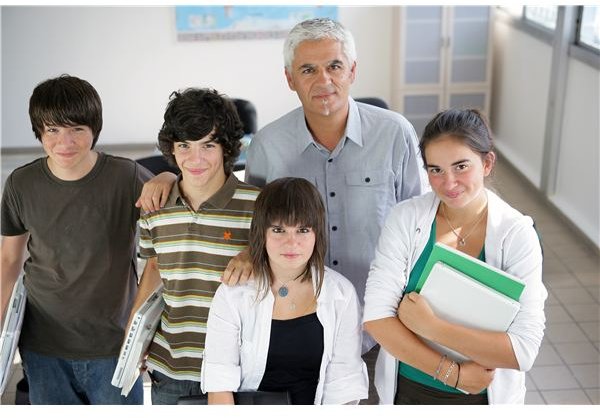Eighth Grade Spanish Verb and Vocabulary Practice Using "To Be" and "To Have"
Two Important Verbs
Two important verb conjugations in any language are ‘to be’ and ‘to have.’ In presenting 8th grade Spanish vocabulary and activities,
you will be introducing your students to these verbs. You need to exemplify how the two verbs for ‘to be’ (estar and ser), and the two verbs for ‘to have’ (tener and haber) are used differently.
Begin with an activity where they can participate among each other after you lead the way with the verb “ser”. Point to yourself and say “You soy un hombre” (I am a man) or “You soy una mujer (I am a woman).Then point to a male student and say “Tu eres un muchacho”, then point to a female student and say “Tu eres una muchacha.” Next have the students point at each other and turn and repeat these statements accordingly.
Then use another example of ser, like writing the figure 1 on the board and saying “Es el número uno” Then ask the class “¿Es el número uno, sí o no?” to which they reply “Sí.” You can then write the figure 9 and ask “¿Es el número uno?” to which they reply “No, no es el número uno, es el número 9”.
The Verb ‘Estar’
Keeping in mind your plan to continue with the other personal pronouns and and their respective forms of the verb “ser” another day; you can now move on to the verb ‘estar’.
Try for example “Yo estoy en la clase” ( I am in the classroom). Pick out a student and ask “¿Roberto, dónde estás?” to which he would reply “Yo estoy en la clase,” or teach him “Yo también estoy en la clase”. Continue with other students in the class.
Now make an unhappy face and try “Estoy triste” to indicate that estar is not only used with place, but also description. Then make a happy face and try “Estoy contento(a)” and have the students follow the pattern. Now, ask “¿Estoy triste o no?” “Estoy contento(a) o no?” to have them practice negatives and asking questions.
Avoiding Mistakes With ‘Soy’
Now, in order to avoid your students saying things like “Yo soy voy” to indicate “I am going” or “Yo soy vengo” to indicate “I am coming”.,(a very common mistake), act out the motions. Let them know that the idea of “am” is already included in these and other verbs. Walk to the door and say “Yo voy a la puerta” or toward a student and say “Yo vengo a tí”.
The Present Progressive
During another class, you will introduce the present progressive, where they can learn that you use “estar” to express sentences like “Yo estoy leyendo” (I am reading) or “Yo estoy escribiendo” for actions being done at the time of speaking and progressing.
The verbs ‘Tener’ and ‘Haber’
Now for the verbs ’tener’ and ‘haber’. You hold a book in your hand and say “Yo tengo un libro” then you open the book and say “He abierto el libro”. Close the book and say “He cerrado el libro.” Let the students take turns at following that pattern, as you tell them “Has abierto el libro”,(You have opened the book’), and “Has cerrado el libro.” (You have closed the book).
For review, add the other pronouns and forms of tener and haber. Read more about Spanish verb conjugation to help your young students in learning and memorizing the correct ways to use these verbs, while increasing their vocabulary of the new language.
